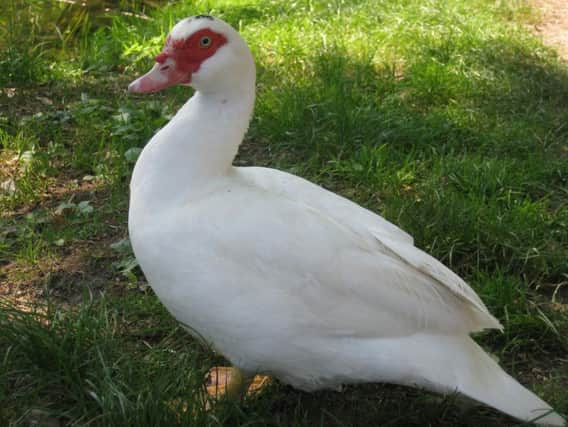Country Diary: Unusual bird discovered by the Spaniards


Ducks are a-dabbling – up tails all.
Scalby village, just north of Scarborough, has a pond beside the ford. Along with mallard and Canada geese, on this occasion, were two Muscovy ducks. Since discovered by the Spaniards in Central and Southern America before 1500, they have been exported all over the world.
Domestic colour forms are numerous. Wild ones are mostly black, bluish or chocolate, with possible white patches. These were pure, snowy-white. Red caruncles (fleshy outgrowths) adorned their faces. Muscovy are large, heavy birds with short legs, broad wings and a horizontal carriage. They’re excellent fliers, though males may be grounded by weight! Look for these unusual domestic ducks, which have claws and webbed feet developed for perching or swimming.
Advertisement
Hide AdAdvertisement
Hide AdRough seas had probably driven the wigeon inland, for Johnson’s Pond off Burniston Road, contained a large gathering, with at least 60 on the water, and 20 grazing on the grassy embankment. The cream crown on a chestnut head readily distinguishes the wigeon, whilst in flight the male has an eye-catching white ‘V’ in the tail, and white patch on the upper wing. Wigeon are grazing ducks and surface feeders. They dive only if injured.
Herons – our largest common land birds, have been seen amongst rocks near the Sea Life Centre, but seem to prefer fresh water for feeding. We regularly view them at Johnson’s Pond, in numbers between five and eighteen. Hunting by day or night in shallow water, they seek fish, amphibians and small mammals or water birds – even Muscovy ducklings. In windy weather they line the hedgerow, with backs to the wind.
Although February may be the hardest part of winter, an occasional sunny day may bring a blaze of golden yellow to some inhospitable habitats. On such a day, I discovered a clump of upright flowering stems bearing sulphur-yellow flowers. It was coltsfoot, returning again and again regardless of how it’s disturbed. Even along our unstable coastline, after a cliff-fall, coltsfoot is usually one of the first plants to establish itself on heavy clay soil.
When in flower, no leaves are visible, only triangular bracts, spirally arranged on the stem, and called scale leaves. The somewhat rounded leaves with pointed tip develop after the flowers have decayed, and may become eight inches in diameter.
Advertisement
Hide AdAdvertisement
Hide AdA yellow-green dye may be extracted, which becomes a true green when sulphate of iron is added.
Owing to the hoof-shaped leaves, the plant was named Ass’s Foot, Horse Hoof, Foal’s Foot, and Colt’s Foot etc.
The leaves were recommended for coughs, colds, asthma and bronchitis. Infuse leaves in boiling water and sweeten with honey. Dried leaves were smoked in pipes or burnt on coals and inhaled. The most popular remedy for coughs was coltsfoot lozenges. Do experiment with the leaves.